Physician Resume Examples
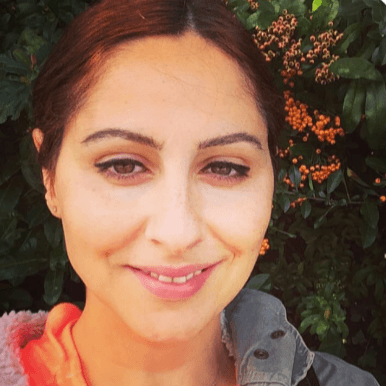
Jul 18, 2024
|
12 min read
Steer your career in the right direction with a physician resume that heals hiring headaches. Learn how to showcase your skills, experiences, and bedside manner effectively, ensuring your application stands out in the crowded healthcare field.
Rated by 348 people
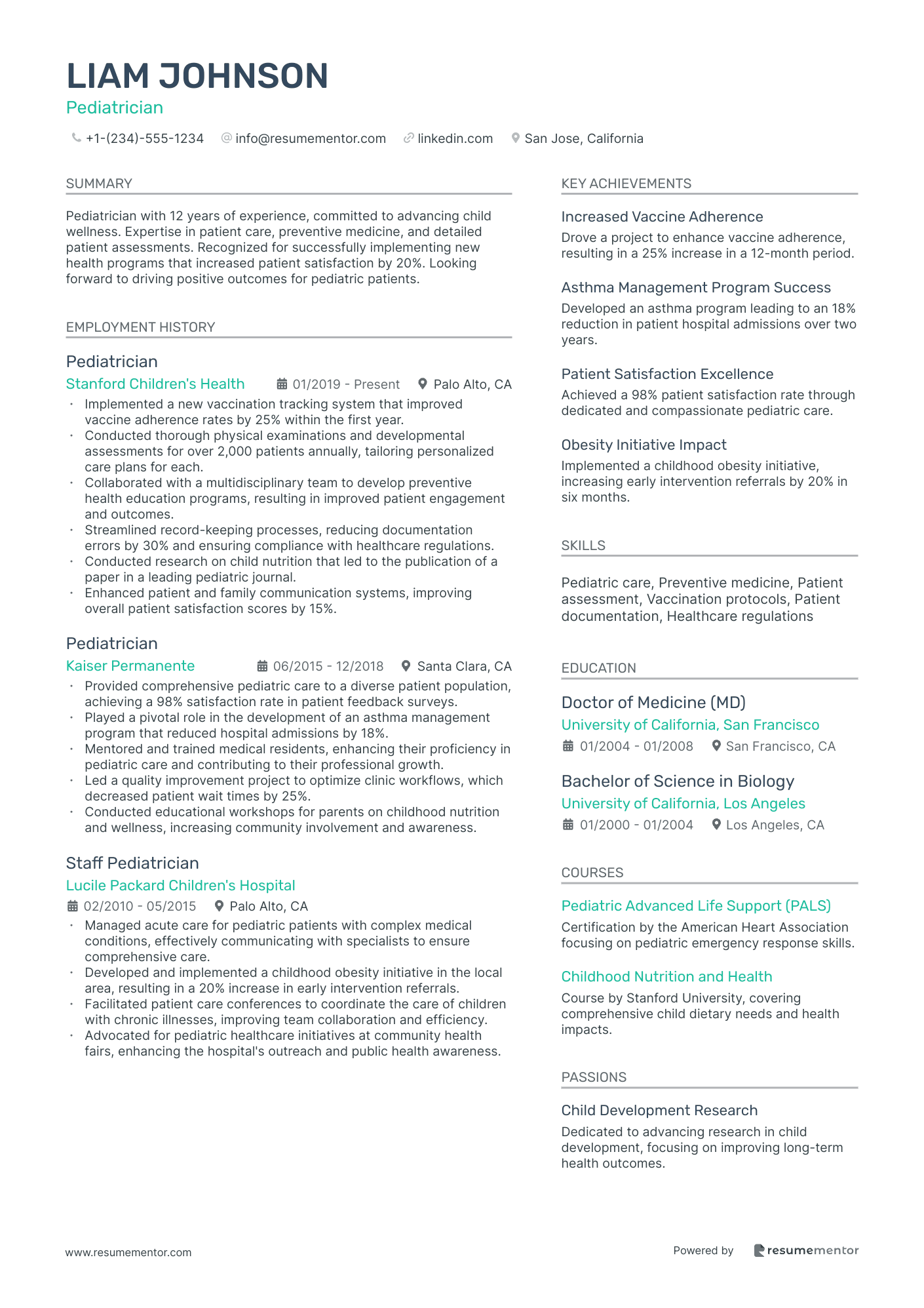
Pediatrician
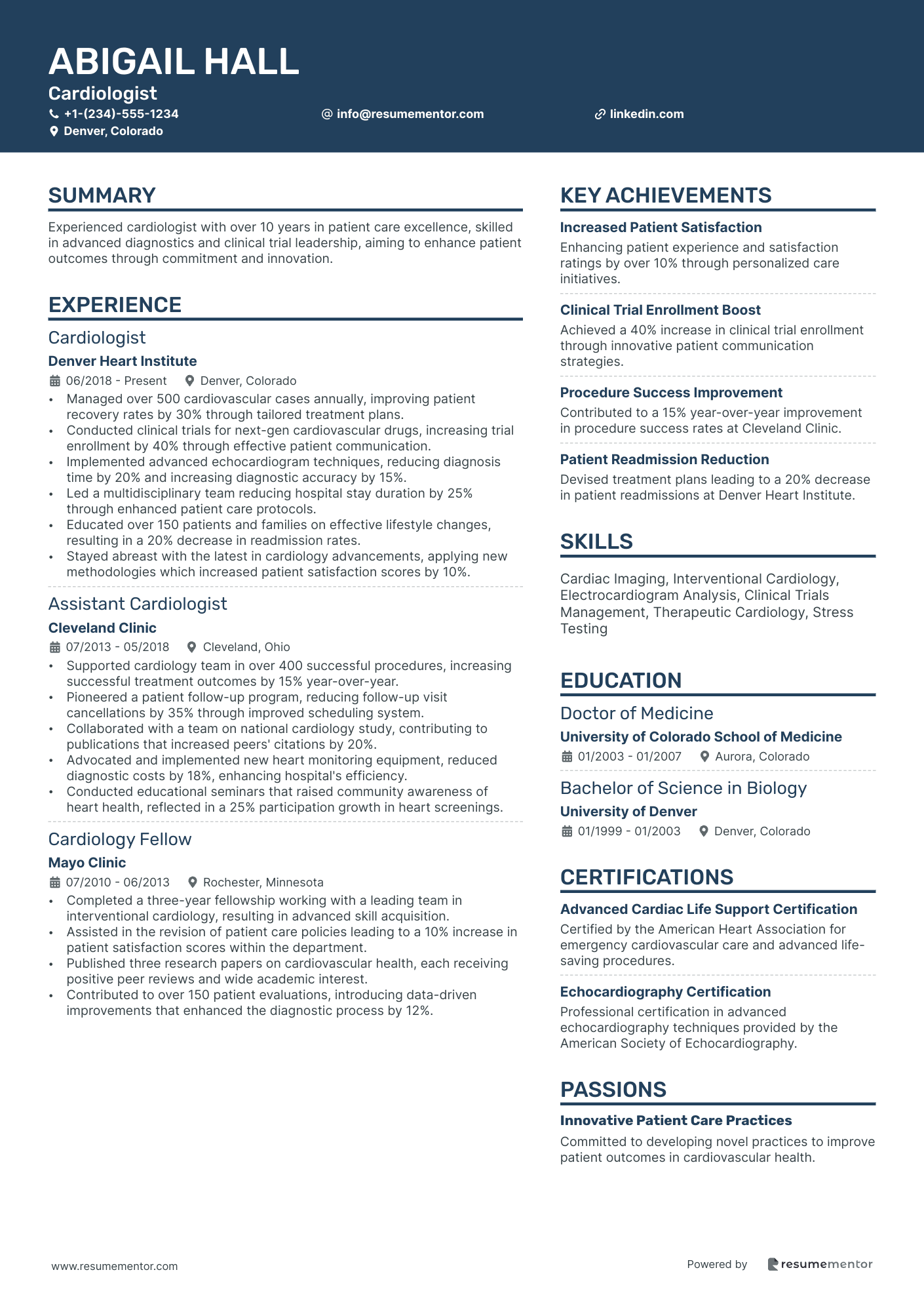
Cardiologist
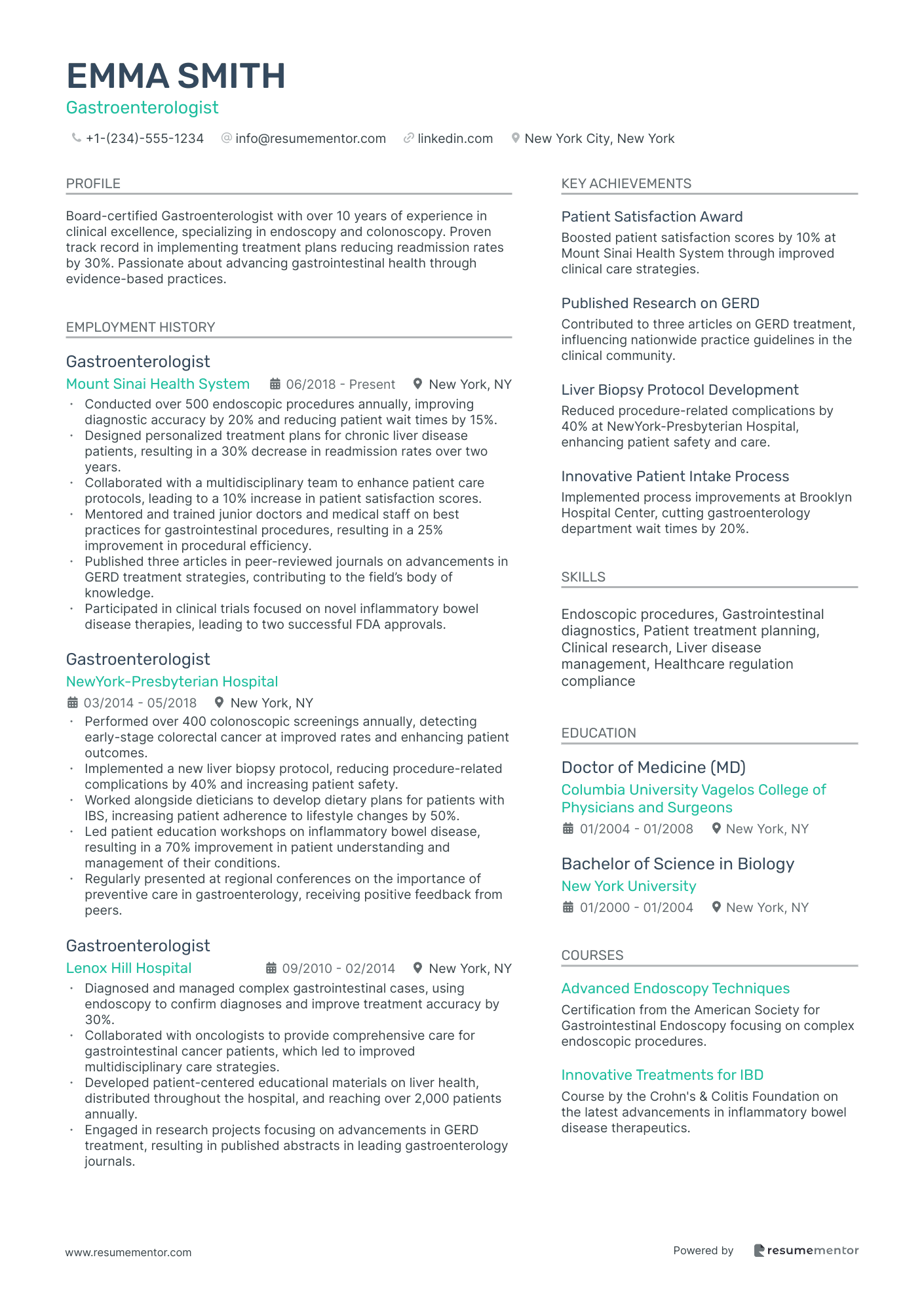
Gastroenterologist
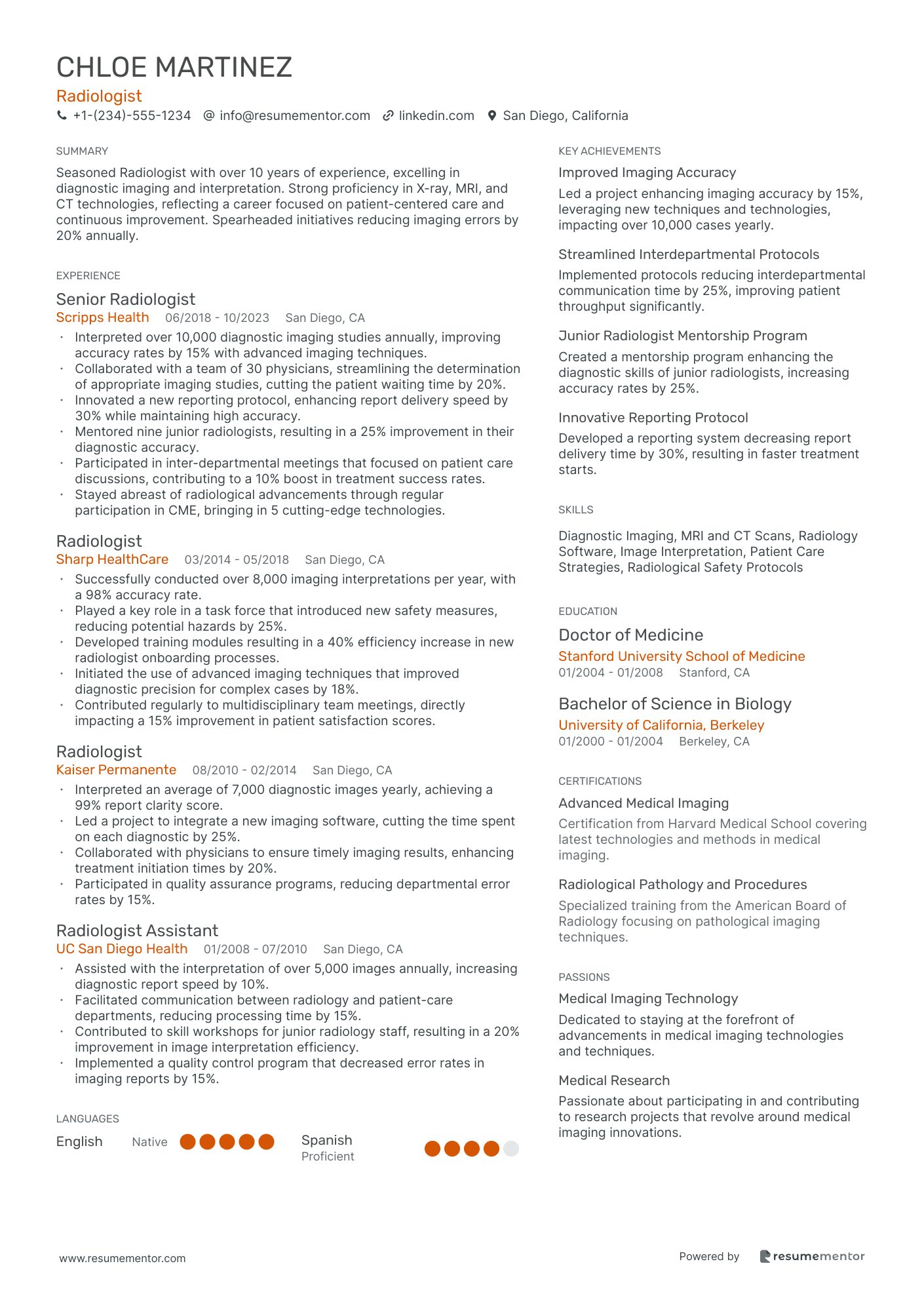
Radiologist
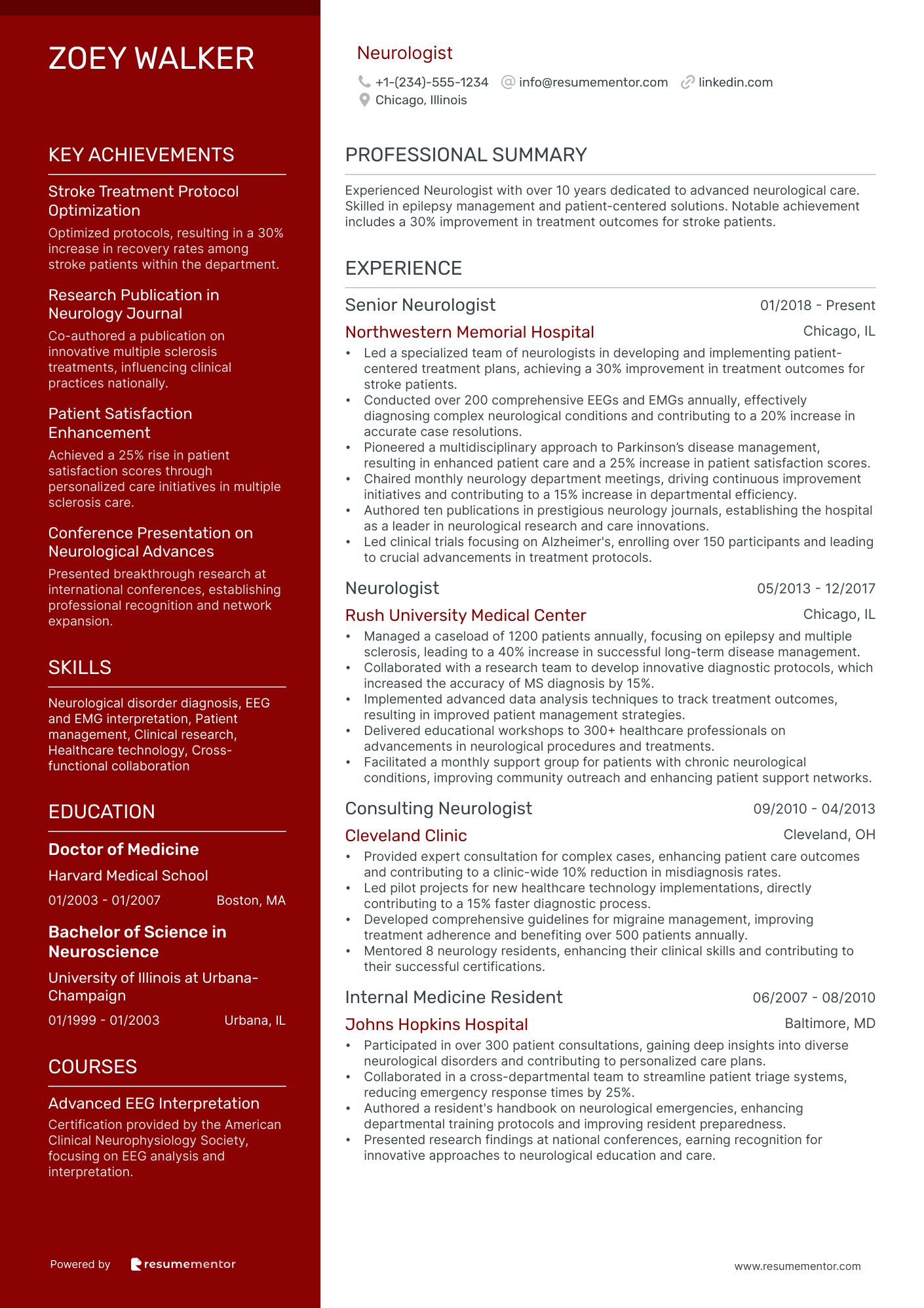
Neurologist
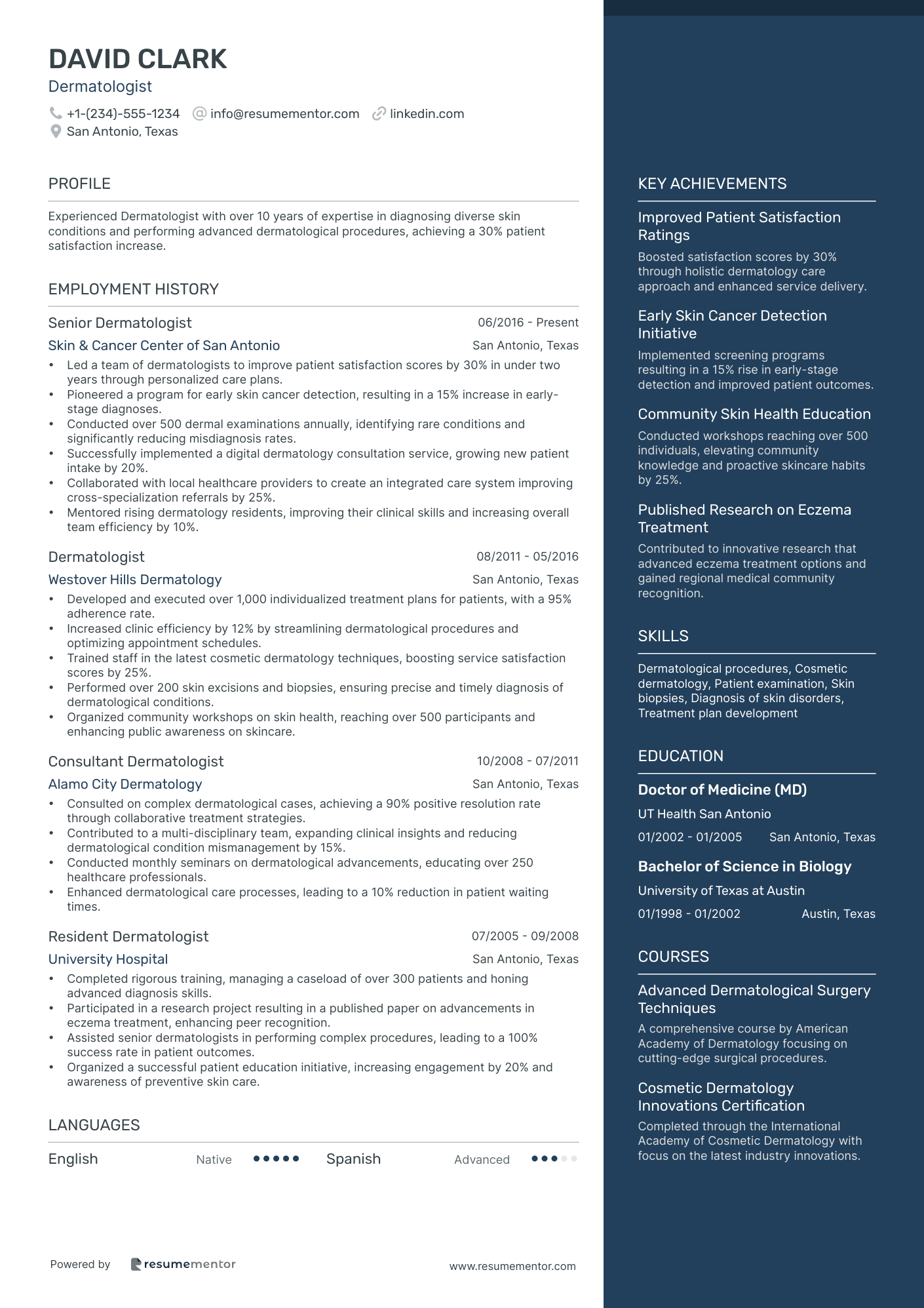
Dermatologist
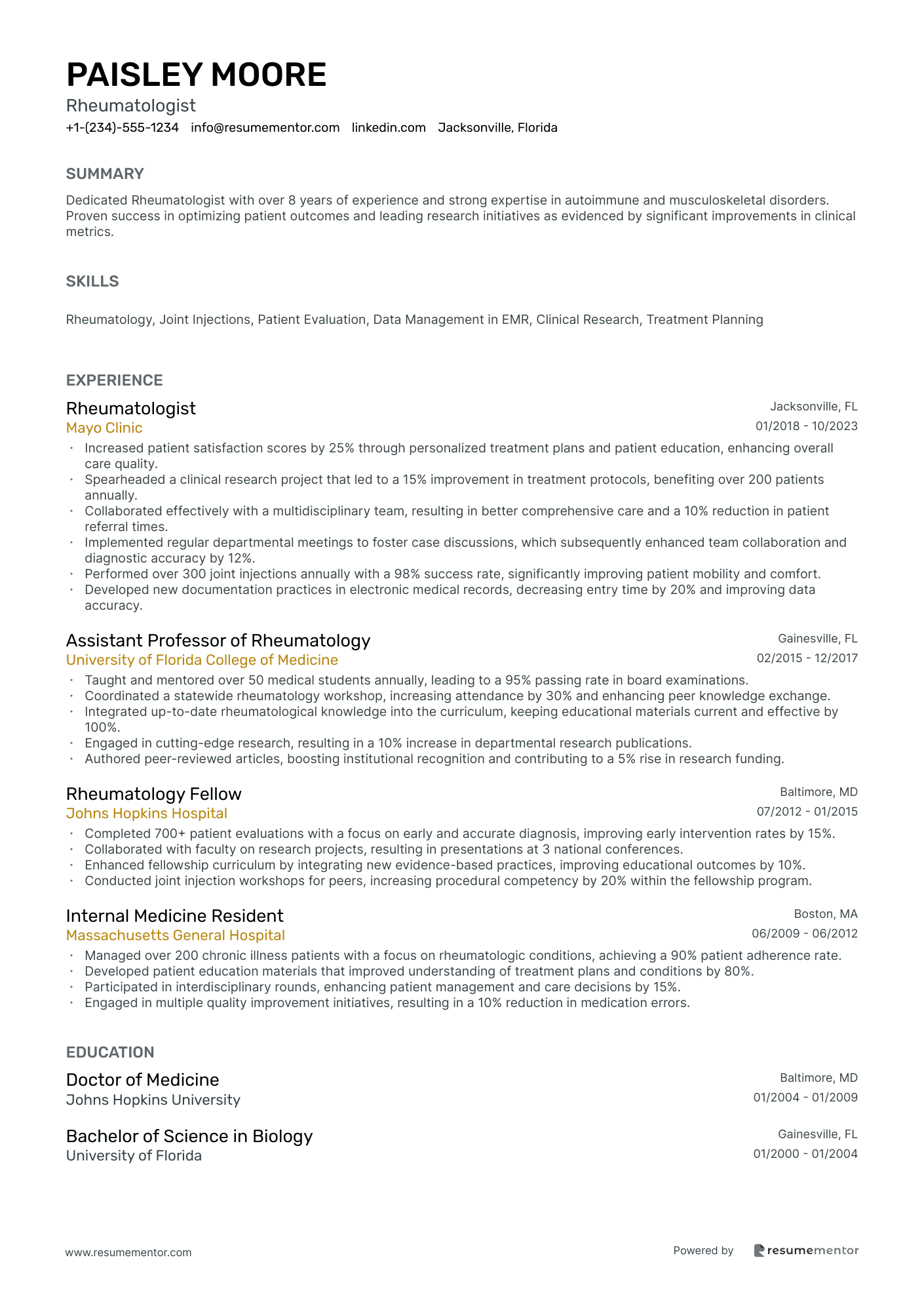
Rheumatologist
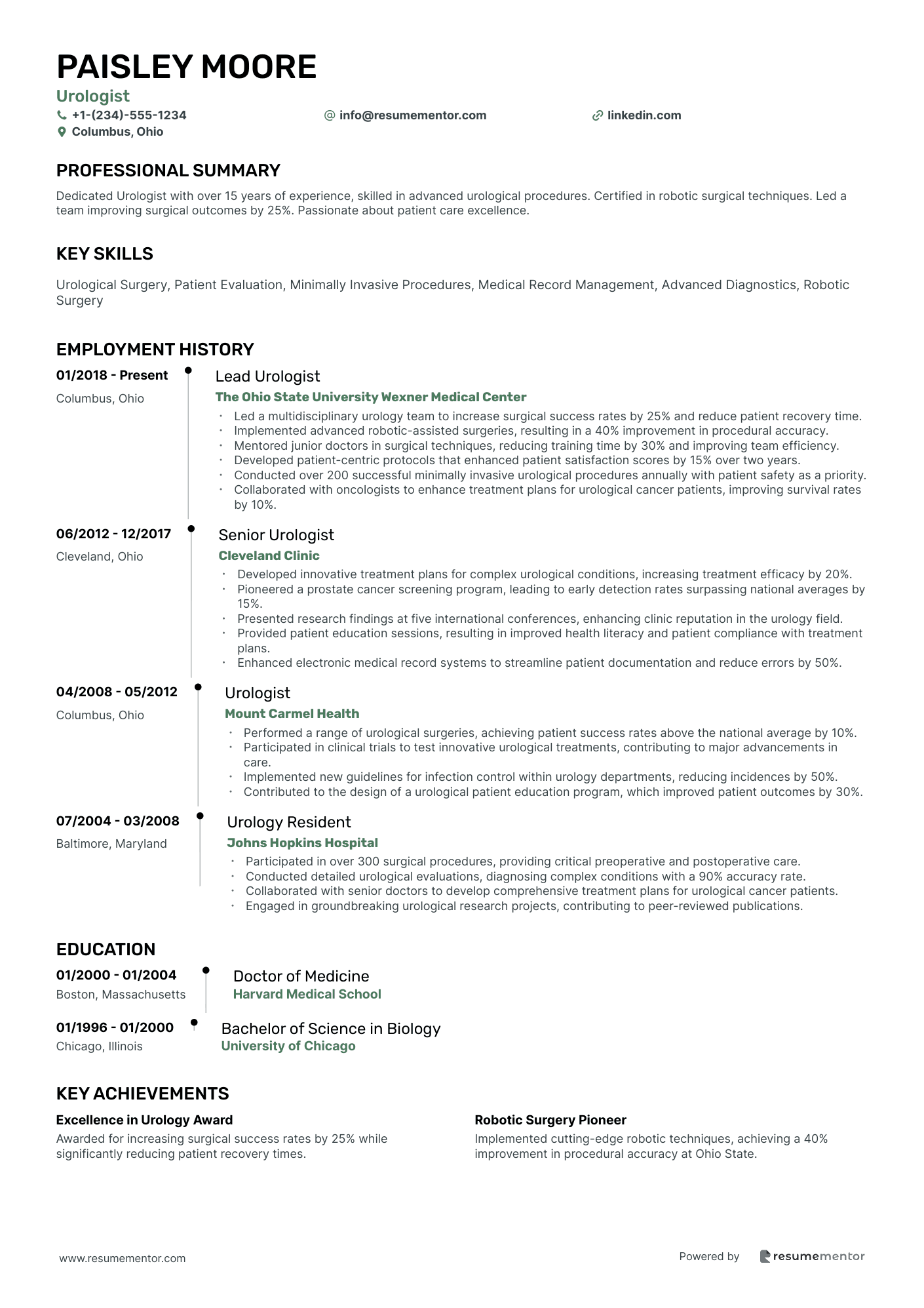
Urologist

Ophthalmologist

Pediatrician resume sample
- •Implemented a new vaccination tracking system that improved vaccine adherence rates by 25% within the first year.
- •Conducted thorough physical examinations and developmental assessments for over 2,000 patients annually, tailoring personalized care plans for each.
- •Collaborated with a multidisciplinary team to develop preventive health education programs, resulting in improved patient engagement and outcomes.
- •Streamlined record-keeping processes, reducing documentation errors by 30% and ensuring compliance with healthcare regulations.
- •Conducted research on child nutrition that led to the publication of a paper in a leading pediatric journal.
- •Enhanced patient and family communication systems, improving overall patient satisfaction scores by 15%.
- •Provided comprehensive pediatric care to a diverse patient population, achieving a 98% satisfaction rate in patient feedback surveys.
- •Played a pivotal role in the development of an asthma management program that reduced hospital admissions by 18%.
- •Mentored and trained medical residents, enhancing their proficiency in pediatric care and contributing to their professional growth.
- •Led a quality improvement project to optimize clinic workflows, which decreased patient wait times by 25%.
- •Conducted educational workshops for parents on childhood nutrition and wellness, increasing community involvement and awareness.
- •Managed acute care for pediatric patients with complex medical conditions, effectively communicating with specialists to ensure comprehensive care.
- •Developed and implemented a childhood obesity initiative in the local area, resulting in a 20% increase in early intervention referrals.
- •Facilitated patient care conferences to coordinate the care of children with chronic illnesses, improving team collaboration and efficiency.
- •Advocated for pediatric healthcare initiatives at community health fairs, enhancing the hospital's outreach and public health awareness.
- •Provided patient-centered care in a high-volume pediatric clinic, consistently maintaining a patient return rate of 85%.
- •Collaborated with healthcare professionals to ensure a high standard of patient care, influencing policy for immunization schedules.
- •Actively participated in community outreach programs to educate families about preventive health measures and vaccination importance.
- •Engaged in regular professional development, attending workshops and seminars to stay current with advances in pediatric medicine.
Cardiologist resume sample
- •Managed over 500 cardiovascular cases annually, improving patient recovery rates by 30% through tailored treatment plans.
- •Conducted clinical trials for next-gen cardiovascular drugs, increasing trial enrollment by 40% through effective patient communication.
- •Implemented advanced echocardiogram techniques, reducing diagnosis time by 20% and increasing diagnostic accuracy by 15%.
- •Led a multidisciplinary team reducing hospital stay duration by 25% through enhanced patient care protocols.
- •Educated over 150 patients and families on effective lifestyle changes, resulting in a 20% decrease in readmission rates.
- •Stayed abreast with the latest in cardiology advancements, applying new methodologies which increased patient satisfaction scores by 10%.
- •Supported cardiology team in over 400 successful procedures, increasing successful treatment outcomes by 15% year-over-year.
- •Pioneered a patient follow-up program, reducing follow-up visit cancellations by 35% through improved scheduling system.
- •Collaborated with a team on national cardiology study, contributing to publications that increased peers' citations by 20%.
- •Advocated and implemented new heart monitoring equipment, reduced diagnostic costs by 18%, enhancing hospital's efficiency.
- •Conducted educational seminars that raised community awareness of heart health, reflected in a 25% participation growth in heart screenings.
- •Completed a three-year fellowship working with a leading team in interventional cardiology, resulting in advanced skill acquisition.
- •Assisted in the revision of patient care policies leading to a 10% increase in patient satisfaction scores within the department.
- •Published three research papers on cardiovascular health, each receiving positive peer reviews and wide academic interest.
- •Contributed to over 150 patient evaluations, introducing data-driven improvements that enhanced the diagnostic process by 12%.
- •Completed a rigorous residency with rotations in cardiology, providing care for diverse patient populations and complex cases.
- •Developed a resident-led clinic initiative that improved patient follow-ups, thus reducing complications by 15%.
- •Coordinated monthly workshops on cardiovascular diseases, enhancing peer knowledge and boosting departmental collaborative capabilities.
- •Monitored and evaluated patient conditions for over 300 cases, leading to more accurate treatment pathways and outcomes.
Gastroenterologist resume sample
- •Conducted over 500 endoscopic procedures annually, improving diagnostic accuracy by 20% and reducing patient wait times by 15%.
- •Designed personalized treatment plans for chronic liver disease patients, resulting in a 30% decrease in readmission rates over two years.
- •Collaborated with a multidisciplinary team to enhance patient care protocols, leading to a 10% increase in patient satisfaction scores.
- •Mentored and trained junior doctors and medical staff on best practices for gastrointestinal procedures, resulting in a 25% improvement in procedural efficiency.
- •Published three articles in peer-reviewed journals on advancements in GERD treatment strategies, contributing to the field’s body of knowledge.
- •Participated in clinical trials focused on novel inflammatory bowel disease therapies, leading to two successful FDA approvals.
- •Performed over 400 colonoscopic screenings annually, detecting early-stage colorectal cancer at improved rates and enhancing patient outcomes.
- •Implemented a new liver biopsy protocol, reducing procedure-related complications by 40% and increasing patient safety.
- •Worked alongside dieticians to develop dietary plans for patients with IBS, increasing patient adherence to lifestyle changes by 50%.
- •Led patient education workshops on inflammatory bowel disease, resulting in a 70% improvement in patient understanding and management of their conditions.
- •Regularly presented at regional conferences on the importance of preventive care in gastroenterology, receiving positive feedback from peers.
- •Diagnosed and managed complex gastrointestinal cases, using endoscopy to confirm diagnoses and improve treatment accuracy by 30%.
- •Collaborated with oncologists to provide comprehensive care for gastrointestinal cancer patients, which led to improved multidisciplinary care strategies.
- •Developed patient-centered educational materials on liver health, distributed throughout the hospital, and reaching over 2,000 patients annually.
- •Engaged in research projects focusing on advancements in GERD treatment, resulting in published abstracts in leading gastroenterology journals.
- •Assisted in diagnostic and therapeutic endoscopic procedures, contributing to procedure success rates exceeding departmental benchmarks by 15%.
- •Participated in a project to streamline patient intake procedures in the gastroenterology department, reducing wait times by 20%.
- •Actively involved in patient case studies, contributing to a departmental publication that improved the understanding of ulcerative colitis management.
- •Coordinated a patient outreach program focusing on preventive care in gastroenterology, educating over 500 local residents.
Radiologist resume sample
- •Interpreted over 10,000 diagnostic imaging studies annually, improving accuracy rates by 15% with advanced imaging techniques.
- •Collaborated with a team of 30 physicians, streamlining the determination of appropriate imaging studies, cutting the patient waiting time by 20%.
- •Innovated a new reporting protocol, enhancing report delivery speed by 30% while maintaining high accuracy.
- •Mentored nine junior radiologists, resulting in a 25% improvement in their diagnostic accuracy.
- •Participated in inter-departmental meetings that focused on patient care discussions, contributing to a 10% boost in treatment success rates.
- •Stayed abreast of radiological advancements through regular participation in CME, bringing in 5 cutting-edge technologies.
- •Successfully conducted over 8,000 imaging interpretations per year, with a 98% accuracy rate.
- •Played a key role in a task force that introduced new safety measures, reducing potential hazards by 25%.
- •Developed training modules resulting in a 40% efficiency increase in new radiologist onboarding processes.
- •Initiated the use of advanced imaging techniques that improved diagnostic precision for complex cases by 18%.
- •Contributed regularly to multidisciplinary team meetings, directly impacting a 15% improvement in patient satisfaction scores.
- •Interpreted an average of 7,000 diagnostic images yearly, achieving a 99% report clarity score.
- •Led a project to integrate a new imaging software, cutting the time spent on each diagnostic by 25%.
- •Collaborated with physicians to ensure timely imaging results, enhancing treatment initiation times by 20%.
- •Participated in quality assurance programs, reducing departmental error rates by 15%.
- •Assisted with the interpretation of over 5,000 images annually, increasing diagnostic report speed by 10%.
- •Facilitated communication between radiology and patient-care departments, reducing processing time by 15%.
- •Contributed to skill workshops for junior radiology staff, resulting in a 20% improvement in image interpretation efficiency.
- •Implemented a quality control program that decreased error rates in imaging reports by 15%.
Neurologist resume sample
- •Led a specialized team of neurologists in developing and implementing patient-centered treatment plans, achieving a 30% improvement in treatment outcomes for stroke patients.
- •Conducted over 200 comprehensive EEGs and EMGs annually, effectively diagnosing complex neurological conditions and contributing to a 20% increase in accurate case resolutions.
- •Pioneered a multidisciplinary approach to Parkinson’s disease management, resulting in enhanced patient care and a 25% increase in patient satisfaction scores.
- •Chaired monthly neurology department meetings, driving continuous improvement initiatives and contributing to a 15% increase in departmental efficiency.
- •Authored ten publications in prestigious neurology journals, establishing the hospital as a leader in neurological research and care innovations.
- •Led clinical trials focusing on Alzheimer's, enrolling over 150 participants and leading to crucial advancements in treatment protocols.
- •Managed a caseload of 1200 patients annually, focusing on epilepsy and multiple sclerosis, leading to a 40% increase in successful long-term disease management.
- •Collaborated with a research team to develop innovative diagnostic protocols, which increased the accuracy of MS diagnosis by 15%.
- •Implemented advanced data analysis techniques to track treatment outcomes, resulting in improved patient management strategies.
- •Delivered educational workshops to 300+ healthcare professionals on advancements in neurological procedures and treatments.
- •Facilitated a monthly support group for patients with chronic neurological conditions, improving community outreach and enhancing patient support networks.
- •Provided expert consultation for complex cases, enhancing patient care outcomes and contributing to a clinic-wide 10% reduction in misdiagnosis rates.
- •Led pilot projects for new healthcare technology implementations, directly contributing to a 15% faster diagnostic process.
- •Developed comprehensive guidelines for migraine management, improving treatment adherence and benefiting over 500 patients annually.
- •Mentored 8 neurology residents, enhancing their clinical skills and contributing to their successful certifications.
- •Participated in over 300 patient consultations, gaining deep insights into diverse neurological disorders and contributing to personalized care plans.
- •Collaborated in a cross-departmental team to streamline patient triage systems, reducing emergency response times by 25%.
- •Authored a resident's handbook on neurological emergencies, enhancing departmental training protocols and improving resident preparedness.
- •Presented research findings at national conferences, earning recognition for innovative approaches to neurological education and care.
Dermatologist resume sample
- •Led a team of dermatologists to improve patient satisfaction scores by 30% in under two years through personalized care plans.
- •Pioneered a program for early skin cancer detection, resulting in a 15% increase in early-stage diagnoses.
- •Conducted over 500 dermal examinations annually, identifying rare conditions and significantly reducing misdiagnosis rates.
- •Successfully implemented a digital dermatology consultation service, growing new patient intake by 20%.
- •Collaborated with local healthcare providers to create an integrated care system improving cross-specialization referrals by 25%.
- •Mentored rising dermatology residents, improving their clinical skills and increasing overall team efficiency by 10%.
- •Developed and executed over 1,000 individualized treatment plans for patients, with a 95% adherence rate.
- •Increased clinic efficiency by 12% by streamlining dermatological procedures and optimizing appointment schedules.
- •Trained staff in the latest cosmetic dermatology techniques, boosting service satisfaction scores by 25%.
- •Performed over 200 skin excisions and biopsies, ensuring precise and timely diagnosis of dermatological conditions.
- •Organized community workshops on skin health, reaching over 500 participants and enhancing public awareness on skincare.
- •Consulted on complex dermatological cases, achieving a 90% positive resolution rate through collaborative treatment strategies.
- •Contributed to a multi-disciplinary team, expanding clinical insights and reducing dermatological condition mismanagement by 15%.
- •Conducted monthly seminars on dermatological advancements, educating over 250 healthcare professionals.
- •Enhanced dermatological care processes, leading to a 10% reduction in patient waiting times.
- •Completed rigorous training, managing a caseload of over 300 patients and honing advanced diagnosis skills.
- •Participated in a research project resulting in a published paper on advancements in eczema treatment, enhancing peer recognition.
- •Assisted senior dermatologists in performing complex procedures, leading to a 100% success rate in patient outcomes.
- •Organized a successful patient education initiative, increasing engagement by 20% and awareness of preventive skin care.
Rheumatologist resume sample
- •Increased patient satisfaction scores by 25% through personalized treatment plans and patient education, enhancing overall care quality.
- •Spearheaded a clinical research project that led to a 15% improvement in treatment protocols, benefiting over 200 patients annually.
- •Collaborated effectively with a multidisciplinary team, resulting in better comprehensive care and a 10% reduction in patient referral times.
- •Implemented regular departmental meetings to foster case discussions, which subsequently enhanced team collaboration and diagnostic accuracy by 12%.
- •Performed over 300 joint injections annually with a 98% success rate, significantly improving patient mobility and comfort.
- •Developed new documentation practices in electronic medical records, decreasing entry time by 20% and improving data accuracy.
- •Taught and mentored over 50 medical students annually, leading to a 95% passing rate in board examinations.
- •Coordinated a statewide rheumatology workshop, increasing attendance by 30% and enhancing peer knowledge exchange.
- •Integrated up-to-date rheumatological knowledge into the curriculum, keeping educational materials current and effective by 100%.
- •Engaged in cutting-edge research, resulting in a 10% increase in departmental research publications.
- •Authored peer-reviewed articles, boosting institutional recognition and contributing to a 5% rise in research funding.
- •Completed 700+ patient evaluations with a focus on early and accurate diagnosis, improving early intervention rates by 15%.
- •Collaborated with faculty on research projects, resulting in presentations at 3 national conferences.
- •Enhanced fellowship curriculum by integrating new evidence-based practices, improving educational outcomes by 10%.
- •Conducted joint injection workshops for peers, increasing procedural competency by 20% within the fellowship program.
- •Managed over 200 chronic illness patients with a focus on rheumatologic conditions, achieving a 90% patient adherence rate.
- •Developed patient education materials that improved understanding of treatment plans and conditions by 80%.
- •Participated in interdisciplinary rounds, enhancing patient management and care decisions by 15%.
- •Engaged in multiple quality improvement initiatives, resulting in a 10% reduction in medication errors.
Urologist resume sample
- •Led a multidisciplinary urology team to increase surgical success rates by 25% and reduce patient recovery time.
- •Implemented advanced robotic-assisted surgeries, resulting in a 40% improvement in procedural accuracy.
- •Mentored junior doctors in surgical techniques, reducing training time by 30% and improving team efficiency.
- •Developed patient-centric protocols that enhanced patient satisfaction scores by 15% over two years.
- •Conducted over 200 successful minimally invasive urological procedures annually with patient safety as a priority.
- •Collaborated with oncologists to enhance treatment plans for urological cancer patients, improving survival rates by 10%.
- •Developed innovative treatment plans for complex urological conditions, increasing treatment efficacy by 20%.
- •Pioneered a prostate cancer screening program, leading to early detection rates surpassing national averages by 15%.
- •Presented research findings at five international conferences, enhancing clinic reputation in the urology field.
- •Provided patient education sessions, resulting in improved health literacy and patient compliance with treatment plans.
- •Enhanced electronic medical record systems to streamline patient documentation and reduce errors by 50%.
- •Performed a range of urological surgeries, achieving patient success rates above the national average by 10%.
- •Participated in clinical trials to test innovative urological treatments, contributing to major advancements in care.
- •Implemented new guidelines for infection control within urology departments, reducing incidences by 50%.
- •Contributed to the design of a urological patient education program, which improved patient outcomes by 30%.
- •Participated in over 300 surgical procedures, providing critical preoperative and postoperative care.
- •Conducted detailed urological evaluations, diagnosing complex conditions with a 90% accuracy rate.
- •Collaborated with senior doctors to develop comprehensive treatment plans for urological cancer patients.
- •Engaged in groundbreaking urological research projects, contributing to peer-reviewed publications.
Ophthalmologist resume sample
- •Managed a large team of 10 specialists, increasing operational efficiency by 30% through strategic scheduling and team optimization.
- •Performed over 500 successful ocular surgeries annually, with a 95% patient satisfaction rate leading to increased referral business.
- •Implemented a new diagnostic protocol, reducing patient wait times by 20%, resulting in an improved patient experience.
- •Led a team project on laser treatment innovations, contributing to a 15% improvement in treatment success rates over the previous year.
- •Developed patient education programs, enhancing patient understanding of eye health and preventative care by 40% among participants.
- •Collaborated with a multidisciplinary team to create individualized treatment plans, achieving a significant reduction in post-operative complications.
- •Diagnosed and treated over 300 cases of glaucoma, enhancing early detection rates by adopting advanced imaging technologies.
- •Performed routine and complex cataract surgeries, maintaining an above-average recovery rate at 95% with minimal follow-up interventions.
- •Contributed to a 25% increase in patient volume by expanding service offerings to include new laser treatments and advanced imaging.
- •Trained 5 resident doctors in surgical techniques, improving the clinic's capacity for more complex procedures by 20%.
- •Participated in regular professional development, keeping up-to-date with cutting-edge ophthalmology techniques and best practices.
- •Developed a successful patient referral program, increasing patient retention rates by 15% year-over-year.
- •Conducted comprehensive eye exams, accurately diagnosing conditions and improving treatment efficacy by 20%.
- •Utilized state-of-the-art diagnostic tests, achieving a breakthrough in early detection of diabetic retinopathy among high-risk patients.
- •Spearheaded a community outreach program, doubling patient engagement and enhancing public awareness of preventative eye care.
- •Gained comprehensive experience in ophthalmic surgeries, performing over 150 supervised procedures with successful learning outcomes.
- •Participated in clinical research projects, contributing to three peer-reviewed publications on novel treatment methodologies.
- •Collaborated with interdisciplinary teams, optimizing patient treatment plans and achieving a 10% increase in procedural effectiveness.
- •Assisted in developing new training modules for incoming residents, improving material comprehension and engagement by 25%.
Crafting a physician resume is like diagnosing a patient—you need to identify what's essential and leave out what's unnecessary. Your journey as a physician is filled with years of education, residency hours, and patient interactions, but translating this experience onto paper can seem daunting. It's essential to understand how to effectively highlight both your skills and aspirations.
Your resume is the bridge to potential employers, serving as your first introduction. Mistakes or missing details can easily overshadow your expertise. Physicians often face the challenge of balancing their technical achievements with their patient care skills. It's not just about listing your qualifications; it's about weaving your story in a compelling, concise way.
This is where a resume template can become invaluable, as it helps structure your information effectively. A well-chosen template can guide the flow of your content and highlight your strengths. Explore this collection of resume templates to find one that suits your needs and makes your resume stand out.
As a physician, you are defined by compassion, precision, and a relentless drive to improve. Your resume should reflect these qualities, making a strong first impression. A well-crafted resume acts as your ticket to new career opportunities, opening doors to positions where you can truly thrive and grow.
Key Takeaways
- The article emphasizes that a physician resume is crucial for introducing your qualifications and aspirations effectively to potential employers.
- Using a suitable resume template can help structure content and highlight strengths, making the resume stand out.
- Key sections of a physician resume include contact information, a professional summary, education, licenses and certifications, work experience, research, and publications.
- Choosing the right resume format, fonts, and ensuring the document is saved as a PDF can impact how your resume is perceived by recruiters.
- Including quantifiable achievements in the experience section and highlighting a balance of soft and hard skills ensures your resume aligns with employer expectations.
What to focus on when writing your physician resume
A physician resume should effectively communicate your medical expertise and relevant qualifications to any recruiter. It should highlight your ability to deliver excellent patient care, showcase your dedication to the field, and detail your professional achievements and training.
How to structure your physician resume
- Contact Information — Begin with your full name, phone number, email, and address. These details should be easy to read and prominently placed, setting a strong foundation for your resume. Ensuring this information is current allows potential employers to easily reach out to you for opportunities, which is crucial in the competitive medical field.
- Professional Summary — Follow up with a brief, powerful paragraph that captures your key skills, specialties, and years of experience. By mentioning specific areas like internal medicine or pediatrics, you quickly convey your strengths and make your resume stand out. This section is your chance to make a memorable impression by summarizing what makes you an exceptional candidate in just a few lines.
- Education — Naturally, your educational background is crucial. List your medical school, graduation year, and relevant degrees. Don't forget to include any honors or distinctions you've earned along the way, as these can differentiate you from other candidates. Highlighting advanced training programs or fellowships can further showcase your commitment to professional growth and excellence.
- Licenses and Certifications — Just as important are your licenses and certifications. Clearly list your medical license details and board certifications, specifying the active states and making sure they are current and relevant. This demonstrates your legal authority to practice medicine and reassures recruiters of your professional standing and adherence to regulatory standards.
- Work Experience — Building on your credentials, detail your clinical roles, the institutions where you've worked, and your employment dates. Highlighting patient care duties, leadership roles, and any notable contributions underscores your practical experience and capability to handle various responsibilities. This section should convey your progression in the medical field and your readiness for new challenges.
- Research and Publications — Finally, if applicable, include any research projects or published papers. Mentioning the journal names and publication dates further establishes your contribution to the medical field and shows your commitment to advancing healthcare knowledge. These accomplishments can set you apart as someone who is not just practicing but also contributing to the medical community.
Consider adding sections like professional memberships, volunteer work, or presentations, as these extras can round out your resume and demonstrate your broader commitment to the medical community. Now, let’s delve deeper into each section and explore the ideal resume format to further strengthen your application.
Which resume format to choose
Creating an impactful physician resume requires careful attention to format and design elements. A chronological format is particularly effective in healthcare, as it organizes your work history and credentials in a way that prioritizes your most recent and relevant experiences. This format helps you communicate your career progression and expertise clearly to potential employers who value extensive experience.
Selecting the right fonts plays a subtle yet important role in how your resume is perceived. Fonts like Rubik, Lato, and Montserrat are modern and professional, offering a clean look that enhances readability. By using these fonts, you subtly direct focus to your key achievements and qualifications, supporting the profession’s need for clarity and detail in documentation.
When it comes to file type, ensure your resume is saved and sent as a PDF. PDFs maintain your layout and formatting across all systems, which means your resume will look the same regardless of the device or platform a recruiter uses. This reliability is crucial during the selection process, as it maintains the professional appearance of your application.
Attention to margins is the final touch that brings your resume together. Using one-inch margins on all sides provides a clean, balanced, and uncluttered presentation. This ensures your document is easy to read and well-organized, which is particularly important when conveying the precision and attention to detail expected in the medical field.
These detailed considerations collectively reinforce your qualifications and readiness for a healthcare role, making your physician resume stand out in a competitive field.
How to write a quantifiable resume experience section
A physician's resume experience section shines when it focuses on quantifiable achievements, as it effectively communicates your skills, contributions, and impact on past organizations. By organizing it with your current or most recent position first and then moving backward, you create a clear chronological flow. Including positions from the last 10-15 years helps highlight relevant skills that match the job you're applying for. Tailoring each entry by using specific action words like "enhanced," "reduced," or "developed" emphasizes your tangible impact.
With specific, measurable accomplishments, your experience section paints a detailed picture of your achievements. Tailoring this experience to align with the employer’s needs ensures it resonates. By seamlessly integrating keywords from the job description, your entries become more impactful and relevant.
- •Enhanced patient satisfaction scores by 15% through personalized care plans.
- •Reduced emergency room wait times by 25% with a streamlined triage process.
- •Developed a patient care protocol that lowered hospital readmissions by 20% over three years.
- •Led a multidisciplinary team, achieving a 30% improvement in treatment compliance rates.
This experience section excels by showcasing clear achievements that highlight your real value. Each bullet point connects to your key responsibilities with measurable results, demonstrating your ability to make significant contributions. Reflecting an understanding of employers' priorities—such as improved efficiency, patient care, and teamwork—this resume example incorporates relevant keywords from job ads into concise statements. This approach not only emphasizes your duties but also your tangible successes, forming a cohesive and impressive narrative.
Training and Development Focused resume experience section
A physician-focused Training and Development resume experience section should clearly and cohesively showcase your expertise and achievements. Start by listing job titles relevant to training and development, emphasizing the goals and successes you reached in those roles. Using bullet points helps make your accomplishments clear and accessible, showing how you’ve impacted physician education and development. Highlight activities such as developing courses, mentoring, and implementing programs to demonstrate your leadership and commitment to skill enhancement.
Each bullet point should begin with an active verb, clearly outlining your responsibilities and actions. Explain the outcomes of your efforts, focusing on how they advanced training objectives or improved team capabilities. Whenever possible, use data or feedback to back up your achievements, providing tangible evidence of your impact. Tailor the details to align with the particular job you’re applying for, ensuring your experience meets the employer’s needs. This approach highlights your dedication to fostering physician growth and excellence throughout your career.
Training and Development Coordinator
City Medical Center
June 2019 - September 2023
- Led the development and implementation of a new physician training program that resulted in a 30% improvement in clinical skill assessments.
- Coordinated monthly workshops focusing on continuous medical education, attended by an average of 50 physicians, enhancing their diagnostic abilities.
- Mentored junior doctors, providing guidance and support, which improved their confidence and professional growth within the healthcare team.
- Evaluated training materials and updated them to reflect the latest medical standards, increasing program relevance and engagement.
Project-Focused resume experience section
A project-focused physician resume experience section should highlight specific projects or initiatives you've been part of, showcasing your leadership and problem-solving abilities. Start by selecting key projects that align with the job you're targeting, focusing on the skills demonstrated and the results achieved. Use straightforward language to describe each project, making sure to explain your role, the challenges you faced, and how you resolved them. To stand out, include measurable results that underscore your impact.
In your descriptions, provide dates to map out your professional timeline. Clearly define the type of project and its significance, and mention any teamwork or leadership roles you played. Use bullet points to outline your responsibilities and achievements, ensuring each entry is specific and highlights your contributions. By showcasing your ability to manage successful projects, you portray yourself as a proactive and effective physician.
Project Lead
Regional Health Initiative
Jan 2020 - Dec 2021
- Led a team of 5 to implement telemedicine solutions in rural clinics, increasing patient access by 40%.
- Developed and conducted training sessions for 20+ staff members to ensure a smooth transition to virtual consultations.
- Collaborated with IT specialists to integrate secure and user-friendly platforms, reducing technical errors by 30%.
- Monitored patient satisfaction and reported improvements in service delivery through quarterly surveys.
Growth-Focused resume experience section
A Growth-Focused physician resume experience section should vividly showcase your achievements and skills that demonstrate your commitment to enhancing patient care and your career progression. Start by highlighting specific accomplishments using clear, active language that focuses on the tangible impacts of your work. Connect your experiences by describing how you've driven improvements and embraced challenges that highlight your leadership and innovative spirit. This approach should underscore your unique contributions and distinguish you as someone dedicated to continual growth and excellence.
To paint a fuller picture, emphasize your role in initiatives that improved patient outcomes or implemented successful programs. Connect this to actionable metrics and projects to effectively illustrate your dedication and growth. By weaving these elements together, your resume will clearly communicate how your experiences make you an outstanding candidate for future opportunities, demonstrating your potential value to prospective employers.
Lead Physician
Health Solutions Clinic
2018 - 2023
- Led a multidisciplinary team to develop a telemedicine program, increasing patient access by 30% in rural areas.
- Implemented a new electronic medical records system, cutting documentation errors by 15% within the first year.
- Spearheaded a patient education initiative that boosted compliance rates by 25% through engaging workshops.
- Organized and conducted monthly peer training sessions on the latest medical advancements, enhancing team knowledge.
Achievement-Focused resume experience section
A physician-focused resume experience section should highlight roles and responsibilities that align with your target job, emphasizing accomplishments over mere tasks. By detailing how your actions led to improvements or successes, you provide potential employers with concrete examples of your value, especially when you include specific outcomes or metrics. This approach not only underscores your professional impact but also makes your contributions more tangible and memorable.
When organizing your entries, focus on leadership, innovation, and excellence in patient care, using strong action verbs to effectively convey your initiative and impact. Each entry should showcase achievements that reinforce your qualifications, such as managing successful projects, enhancing operational efficiencies, or boosting patient satisfaction. Incorporating quantifiable results further clarifies your success and ensures potential employers can clearly see how you made a difference in your previous roles.
Chief Resident
Green Valley Medical Center
January 2018 - Present
- Enhanced patient satisfaction scores by 30% through personalized care initiatives.
- Developed a new patient booking system reducing wait times by 20%.
- Led a team of 10 in implementing electronic health records, improving data accuracy by 40%.
- Conducted peer workshops to share innovative best practices, increasing team efficiency by 15%.
Write your physician resume summary section
A physician-focused resume summary section should effectively capture your career highlights and expertise. Concentrate on showcasing what makes you stand out, using active language to convey your commitment and proficiency in medicine. Consider this example using JSON format:
This sample effectively emphasizes certification, experience, and crucial skills like patient care and leadership. Together, these elements convey your competence and dedication. When describing yourself, honesty and clarity about your skills and achievements are key. Including specific examples or scenarios can further enhance your credibility.
Understanding the differences between various resume sections adds another layer of finesse. A summary emphasizes your past accomplishments, while an objective focuses on your future goals. Meanwhile, a resume profile combines both, providing a brief snapshot of your career and aspirations. On the other hand, a summary of qualifications lists key skills in a more bulleted format. Choosing the right section depends on your career stage. If you're an experienced physician, a well-crafted summary offers a compelling narrative of your past achievements.
Listing your physician skills on your resume
A skills-focused physician resume can significantly enhance how employers perceive your qualifications. This section can stand alone or integrate with your experience or summary. Highlight your strengths by emphasizing soft skills like communication, empathy, and teamwork, which are vital in patient care. Meanwhile, hard skills are your technical abilities, such as performing medical procedures, diagnosing conditions, and using healthcare software. Including skills and strengths as keywords in your resume helps align it with job descriptions, capturing the attention of hiring managers effectively.
A standalone skills section presents your abilities clearly and allows readers to quickly grasp your expertise. Here's an example of how to effectively list your skills as a physician:
The list above stands out by balancing clinical and leadership skills, providing a comprehensive view of your capabilities in the medical field.
Best hard skills to feature on your physician resume
A physician's hard skills should demonstrate competence in providing high-quality patient care. These skills communicate your proficiency in specific medical procedures and technology, making you stand out as a valuable asset. Here are 15 critical hard skills every physician should consider emphasizing:
Hard Skills
- Clinical Diagnosis
- Surgical Techniques
- Medical Imaging
- Interpretation of Lab Results
- Medication Prescription
- EHR Management
- Patient Assessment
- Acute Care Management
- Chronic Illness Management
- Specialty-Specific Procedures
- Trauma Care
- Advanced Cardiovascular Life Support (ACLS)
- Medical Documentation
- Procedural Sedation
- Health Informatics
Best soft skills to feature on your physician resume
Physicians should also highlight soft skills, illustrating the ability to interact well with patients, colleagues, and support staff. These skills convey your capacity to navigate high-stress environments while offering empathy and support. Consider these 15 essential soft skills as highlights:
Soft Skills
- Communication
- Empathy
- Problem Solving
- Teamwork
- Time Management
- Adaptability
- Leadership
- Patient Advocacy
- Conflict Resolution
- Attention to Detail
- Decision Making
- Stress Management
- Emotional Intelligence
- Motivational Skills
- Networking Elegance
How to include your education on your resume
The education section is a crucial component of your physician resume. It outlines your academic background and showcases your qualifications for the role you’re applying for. Always tailor this section to the job you’re seeking, emphasizing only relevant educational achievements. Including irrelevant education can dilute the impact of your resume. If you graduated with honors, such as cum laude, highlight this to signal academic excellence. Including your GPA can be advantageous if it’s particularly strong, typically 3.5 or higher, but isn’t necessary if it’s not impressive. When listing your degree, use the formal title—such as Doctor of Medicine (MD)—to convey your exact qualifications right away.
Here are examples for clarity:
The second example is excellent because it presents a degree relevant to a physician role. By omitting unrelated educational experiences, it remains focused and impactful. It highlights a reputable medical school, suggesting a solid educational foundation. The absence of a GPA suggests the candidate chooses to highlight other strengths, which can be strategic if the GPA isn’t outstanding. The listed degree and institution directly align with the expected qualifications for a physician, making it a strong fit for the intended audience.
How to include physician certificates on your resume
A certificates section is an important part of your physician resume. First, list the name of the certificate. Then, include the date when you received it. Add the name of the issuing organization. Certificates can also be included in the header for quick visibility. For example, you could write "John Doe, MD - Board Certified in Internal Medicine, ACLS Certified."
Here's a good example of a standalone certificates section:
This example is good because it includes certificates that are highly relevant to a physician's role. It lists certifications most employers look for, like being board certified and having ACLS certification. It also includes the issuing organization, which adds credibility. These certifications and details show the physician's qualifications at a glance. Such a section makes it easy for hiring managers to see your qualifications. It showcases your commitment to ongoing education and professional standards.
Extra sections to include in your physician resume
Crafting a comprehensive physician resume can be a challenging task. Showcasing your skills and experience in a clear and concise manner is crucial. Including various sections beyond the standard education and work experience can really make your CV stand out to potential employers.
- Language section — Highlight your multilingual abilities to enhance your communication with a diverse patient base.
- Hobbies and interests section — Share your personal passions to humanize your resume and show a well-rounded character.
- Volunteer work section — Demonstrate your commitment to community and altruism, showcasing your dedication beyond paid roles.
- Books section — List medically relevant books you have read to display your dedication to ongoing learning and professional development.
Incorporating these sections adds depth and personality to your profile. This approach can significantly improve your chances during the hiring process. Each section contributes to a holistic view of your professional and personal development.
In Conclusion
In conclusion, creating a standout physician resume involves a thoughtful approach to presenting your education, skills, and experiences. Your resume is not just a collection of accomplishments; it's a narrative of your professional journey, showcasing who you are as a healthcare provider. Make sure to highlight your patient care abilities alongside technical expertise, as both are essential in today's healthcare environment. Utilizing an effective format, such as a chronological layout, ensures that your most recent and relevant experiences shine through. Incorporate active language and quantifiable results to vividly convey your contributions and strengths. Simply listing responsibilities is not enough; demonstrating how you improved patient outcomes or advanced team capabilities will set you apart. Remember to keep your contact details updated and your professional summary sharp, as these first impressions can be crucial. Highlight soft skills such as empathy and communication, alongside hard skills like clinical diagnosis and EHR management, to present a well-rounded view of your capabilities. Consider including extra sections, like volunteer work or languages, to enrich your resume's content. By weaving these elements together, you create a cohesive and compelling application. Thus, a well-designed resume not only reflects your past achievements but also positions you as a promising candidate for future opportunities in the medical field.
Related Articles

Continue Reading
Check more recommended readings to get the job of your dreams.
Resume
Resources
Tools
© 2025. All rights reserved.
Made with love by people who care.

